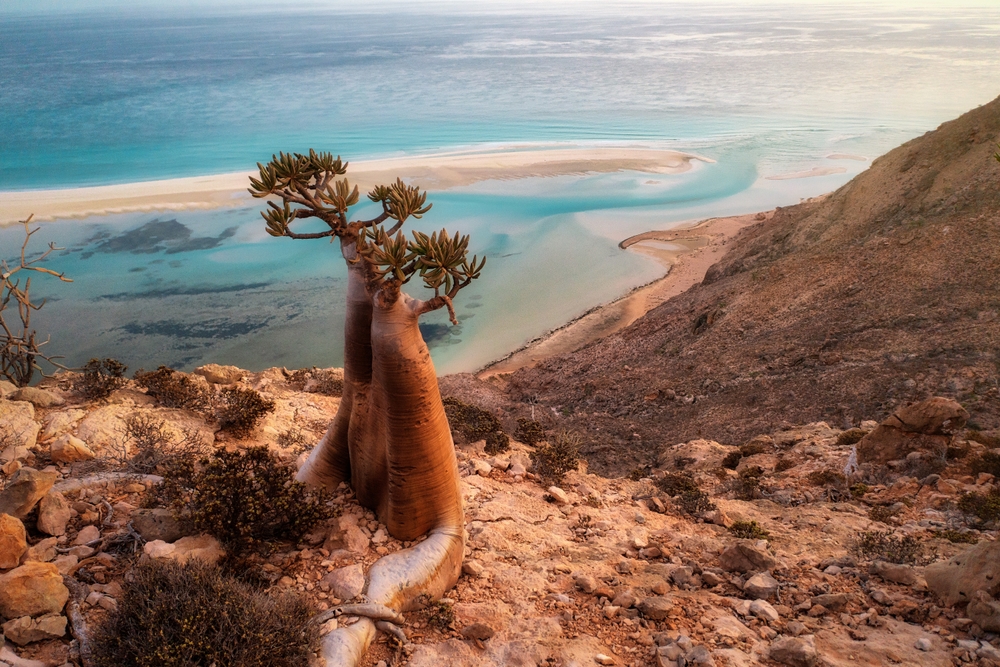Yemen, a country known for its rich history and stunning landscapes, is home to two officially designated national parks: Socotra National Park and Jebel Bura National Park. These parks offer a glimpse into Yemen’s remarkable biodiversity, featuring endemic species, dramatic geological formations, and unique ecosystems that have been shaped by the country’s arid climate and coastal influences.
Socotra National Park, located on the Socotra Archipelago in the Arabian Sea, is often referred to as the “Galápagos of the Indian Ocean” due to its extraordinary biodiversity. The island is home to nearly 700 endemic species, including the iconic Dragon’s Blood Tree (Dracaena cinnabari), which has a distinctive umbrella-like shape and produces a crimson resin historically used for medicinal and dyeing purposes. The island’s rugged limestone plateaus, deep caves, and pristine beaches provide habitats for a wide variety of flora and fauna, some of which exist nowhere else on Earth. The park’s marine environment is equally rich, with coral reefs teeming with fish, turtles, and dolphins. Socotra’s isolation has allowed its ecosystems to evolve uniquely, making conservation efforts critical in preserving its delicate balance. However, challenges such as climate change, uncontrolled development, and overgrazing by introduced livestock pose significant threats to its biodiversity.
On the mainland, Jebel Bura National Park stands out as a rare green oasis in an otherwise arid landscape. Located in western Yemen, this mountainous park is home to one of the last remaining tropical cloud forests on the Arabian Peninsula. With its steep, forested slopes, the park provides sanctuary for a variety of plant and animal species, including rare birds and endangered mammals. The dense vegetation supports numerous endemic plant species, and the park’s high-altitude location contributes to its relatively cooler and wetter microclimate. This makes it an essential refuge for biodiversity in a country where desertification is an ongoing concern. Conservation efforts in Jebel Bura have focused on preventing deforestation and habitat destruction, but political instability has hindered long-term protection initiatives.
Both national parks face significant conservation challenges due to Yemen’s ongoing humanitarian crisis and political instability. Limited governmental resources, illegal hunting, and habitat degradation threaten their ecological integrity. However, despite these difficulties, local and international conservation groups have been working to document and protect Yemen’s unique wildlife. Community-led conservation projects, particularly on Socotra, have made strides in promoting sustainable tourism and protecting endemic species. The island’s UNESCO World Heritage designation has also helped draw international attention to the importance of preserving its natural wonders.
Yemen’s national parks are vital for the country’s biodiversity and cultural heritage, offering some of the most unique landscapes in the region. While challenges persist, their conservation remains a priority for both local communities and international organizations striving to safeguard these extraordinary ecosystems for future generations.












































































